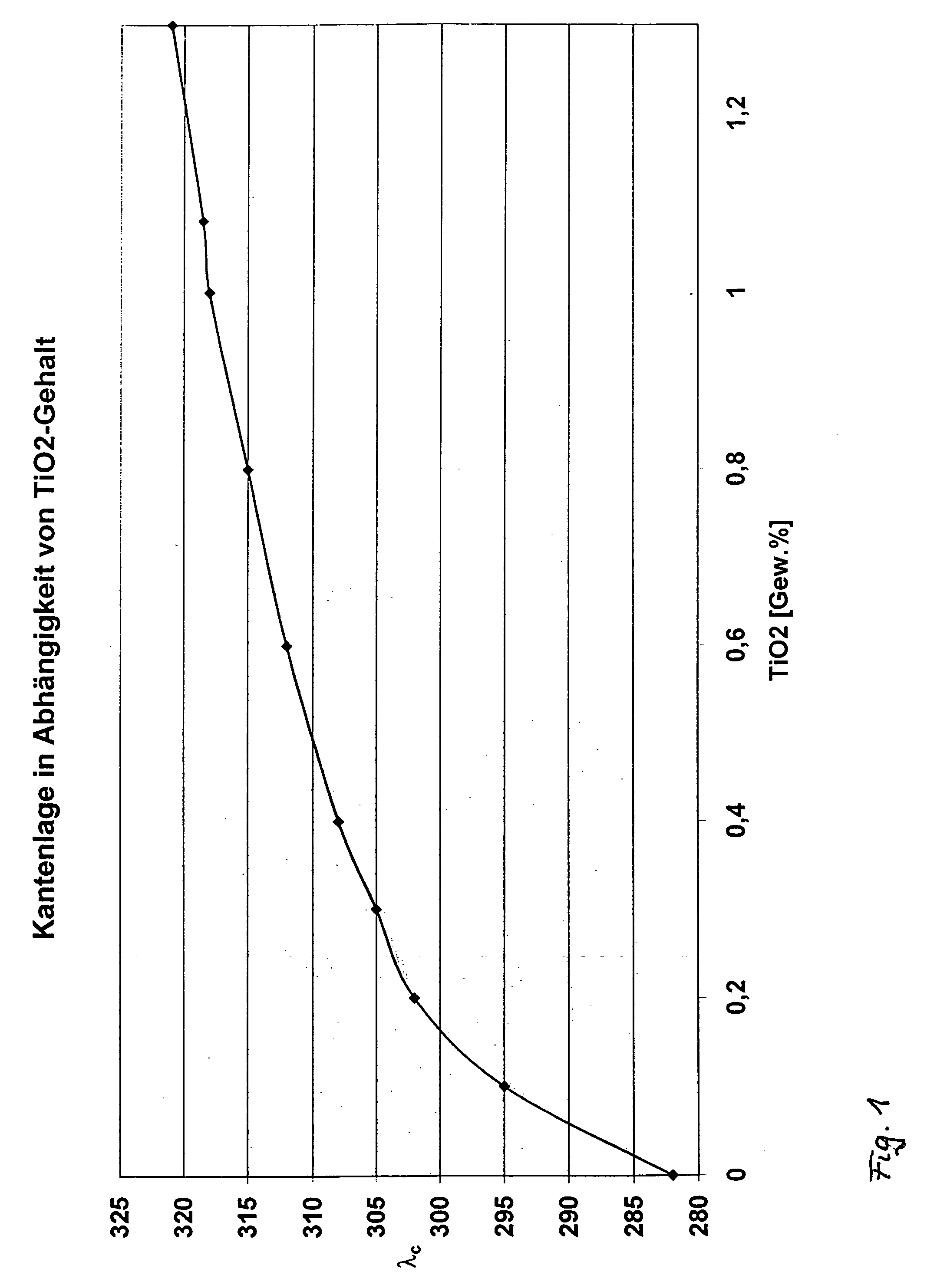Colorless glasses/borosilicate glasses with special UV-edge
a borosilicate glass, colorless technology, applied in the direction of optics, instruments, optical elements, etc., can solve the problems of affecting the solarization effect of the glass, the glass type is not suitable for commercial application cases, and the material cost of the glass is significantly increased
- Summary
- Abstract
- Description
- Claims
- Application Information
AI Technical Summary
Benefits of technology
Problems solved by technology
Method used
Image
Examples
Embodiment Construction
[0032] Normal optical raw materials are used for producing the exemplary embodiments of glasses.
[0033] The well homogenized glass batch was melted, refined and homogenized in the laboratory in a Pt crucible at 1420.degree. C. Subsequently the glass was cast and cooled at 20 K / h.
1TABLE 1 shows a melt example of a 0.51 melt: Oxides % by weight Raw material Initial weight (g) SiO.sub.2 69.98 SiO.sub.2 772.65 B.sub.2O.sub.3 11.19 H.sub.3BO.sub.3 219.5 Na.sub.2O 9.49 NaNO.sub.3 287.79 K.sub.2O 7.29 3.8 K.sub.2CO.sub.3 61.69 3.49 KNO.sub.3 82.78 CaO 0.2 CaCO.sub.3 3.94 BaO 1.35 Ba(NO.sub.3).sub.2 25.38 TiO.sub.2 0.20 TiO.sub.2 2.22 Sb.sub.2O.sub.3 0.30 Sb.sub.2O.sub.3 3.31
[0034] The properties of the thus obtained glass are indicated in Table 2, Example 3.
2TABLE 2 shows 9 examples of glasses according to the invention (1 to 9) with their compositions (in % by weight on an oxide basis) and their essential properties: Example No. Oxides 1 2 3 4 5 6 7 8 9 B.sub.2O.sub.3 11.21 11.20 11.19 11....
PUM
| Property | Measurement | Unit |
|---|---|---|
| thickness | aaaaa | aaaaa |
| thickness | aaaaa | aaaaa |
| thickness | aaaaa | aaaaa |
Abstract
Description
Claims
Application Information
 Login to View More
Login to View More - R&D
- Intellectual Property
- Life Sciences
- Materials
- Tech Scout
- Unparalleled Data Quality
- Higher Quality Content
- 60% Fewer Hallucinations
Browse by: Latest US Patents, China's latest patents, Technical Efficacy Thesaurus, Application Domain, Technology Topic, Popular Technical Reports.
© 2025 PatSnap. All rights reserved.Legal|Privacy policy|Modern Slavery Act Transparency Statement|Sitemap|About US| Contact US: help@patsnap.com

